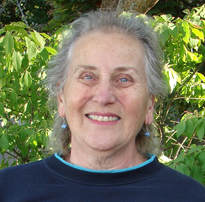 People are confused. They hear the terms “global warming” and “climate change” tossed about without much explanation. We all talk about the weather, but what does that word actually mean, and how does it relate to these other terms? NASA defines global warming: “Global warming is the increase in Earth’s average surface temperature due to rising levels of greenhouse gases.” So global warming is a measurable statistic. Record the temperature at many sites on Earth for a given year, add them up, and divide to get an average. Rising levels of greenhouse gases are also well measured. The famous “Keeling curve” of atmospheric CO2 begun in Hawaii in 1957 is the best example. Climate change is more complicated. Climate change is a long-term change in the Earth’s climate and includes measures of the atmosphere, oceans, land, cryosphere (snow and ice), wind, precipitation, deforestation, wildfire, and more, as well as temperature. So, climate change is a more inclusive measure of many factors changing the Earth system, which is very different from a single statistic like the rise in temperature from global warming. Then there’s the weather. What, exactly is the weather? That term refers to what’s going on in the atmosphere at a particular time and place. It includes the air temperature, wind speed, humidity, and precipitation. Weather happens day to day, while global warming is shown by recording day-to-day temperatures over a long period of time. Climate change is a long-term process that can result in drastic changes in conditions on our planet. To sum up: Weather refers to what’s happening in the atmosphere at a given time and place over the course of days to months. Global warming refers to an upward trend in the average temperature over a period of years to decades. Climate change is a long-term process that can be influenced by changes in the average temperature but includes many other factors. To watch a brief but amazing video of the affect of global warming and climate change over the next 20 years, click here. 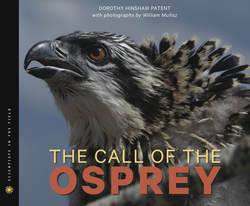 Dorothy's recent book The Call of the Osprey, has been chosen as a Best Science Trade Book for Students by the National Science Teachers Association. It covers research being done in Western Montana by scientists at the University of Montana. Starting in the late 1800's, Butte, MT, at the headwaters of the Clark Fork River, was the largest copper mine in the U.S. The major result of the mining was two-fold—the electrification of America and the largest Superfund cleanup site in the U.S. Call of the Osprey deals not only with current research but also with the history of Butte and the lives of the scientists involved in the research. Click here to find out more. Dorothy Hinshaw Patent is a member of iNK's Authors on Call and is available for classroom programs through Field Trip Zoom, a terrific technology that requires only a computer, wifi, and a webcam. Click here to find out more. MLA 8 Citation
Patent, Dorothy Hinshaw. "Defining Weather, Global Warming, and Climate Change." Nonfiction Minute, iNK Think Tank, 16 Apr. 2018, www.nonfictionminute.org/the-nonfiction-minute/ Defining-Weather-Global-Warming-and-Climate-Change.
2 Comments
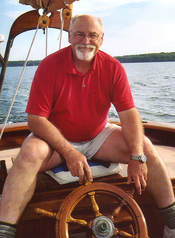
Where am I? This was a cruel question for sailors before John Harrison.
In 1707 a fleet of British warships mistook their location and sailed onto the rocky Scilly Islands. Two thousand men drowned. The Royal Navy offered a prize of £20,000 (3 to 4 million dollars in today’s money) for anyone who could provide a way for ships to find their position. North and south latitude wasn’t the problem. Tables gave the positions of the sun, moon and stars above or below the equator. Navigators could use a sextant (it measures angles between the ocean horizon and a celestial body) to find a ship’s position north or south. But the only way of knowing your position on the spinning earth, east or west, is to know what time it is, within seconds, at the Royal Observatory at Greenwich, England—0° longitude. Sailors needed a seagoing clock! Clocks in the 1700’s were slow or fast by several minutes a week. Not good enough. And they measured seconds with a pendulum, which wouldn’t work on a rocking, rolling ship. John Harrison was a fine carpenter who became fascinated by accurate timekeeping. He built big clocks for houses, barns and churches. Bit by bit he made them more accurate. He set out to win the longitude prize. He invented ways for a clock to compensate for temperature, so they wouldn’t run slower when it got warmer. He invented a nearly frictionless escapement (the mechanism that “counts” the tick-tocks with the clock’s hands). He overcame the pendulum problem with pivoted “dumbells” that rocked back and forth with springs. Harrison worked for five years to construct the large and beautiful Sea Clock #1. In 1736 Harrison and his clock took a trip on HMS Centurion to Lisbon, Portugal, and back. Harrison was terribly seasick. His clock was not. It was a great success. But the Royal Navy wouldn’t award the prize. It dithered for the next 37 years. Harrison worked on, making his sea clocks smaller and more accurate. In 1761 he sent his son William on a trial run with Sea Watch #1 to Jamaica and back. The smaller clock worked beautifully. The Navy kept dithering. Not until Harrison was 80 years old was part of the prize awarded to him. He died three years later but he knew that he had changed the world, solving one of our most important, most perplexing problems: where are we? 
An important part of Jan Adkins' considerable output is books of non-fiction for young people, his special audience. He also writes humor and feature articles for several magazines. He has illustrated most of his books and contributes illustrations to dozens of mainstream magazines, especially on marine and technical subjects. Have a look at his Wooden Ship: The Building of a Wooden Sailing Vessel in 1870, a chronicle of a fictional whale ship describing and illustrating the details of her building from design to launching.
Jan Adkins is a member of iNK's Authors on Call and is available for classroom programs through Field Trip Zoom, a terrific technology that requires only a computer, wifi, and a webcam. Click here to find out more.
MLA 8 Citation
Adkins, Jan. "Tick Tock: A Carpenter Solves an Ocean Riddle." Nonfiction Minute, iNK Think Tank, 19 Mar. 2018, www.nonfictionminute.org/ the-nonfiction-minute/Tick-Tock-A-Carpenter-Solves-an-Ocean-Riddle. 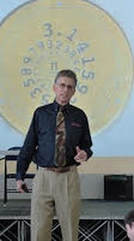 Pi Day takes place on March 14th this year, as it has every year since 1988 when this mathematical holiday was invented. Pi Day? Does that sound crazy? Sure it does. It’s irrational. Pi is the world’s most famous “irrational” number. Therefore, Pi Day is the world’s most irrational holiday! Take a circle, any circle, and divide the circumference by the diameter. The quotient is the number called pi, represented by the Greek letter π. It is a little more than three. How much more? That is a question that people have been working on for centuries. Pi is an incredibly useful number in mathematics, physics and engineering. It helps us understand things from the shape of an apple to the energy of stars. It helps us design things, from buildings to spaceships. Pi is an irrational number. That means when you write it as a decimal, its digits do not just end (like 3.5) and they do not repeat in a pattern (like 0.3333…, where the 3s go on forever). Here is a slice of pi: 3.141592653… The “dot-dot-dot” means the digits keep on going. How far? Is there a pattern? With supercomputers, mathematicians have probed the mysteries of pi to over a trillion digits. The digits keep going. Infinitely. No pattern has ever been found. (Written in an ordinary font, a trillion digits of pi would go around the world 50 times.) But the endless, patternless nature of pi enchants many minds and some people delight in memorizing the digits. A 69 year-old man named Akira Haraguchi recited 100,000 digits from memory in Tokyo in 2006. He shattered the previous record of Chao Lu from China, who had memorized merely 67,890 digits of pi after studying for four years. Can you see a date in the first three digits: 3.14? It’s March 14th — Pi Day! This holiday is celebrated worldwide by students, teachers and math enthusiasts who enjoy pi-themed activities, clothing, jokes and food (namely pie). This is an ordinary year as far as Pi Day is concerned, but in 2015, Pi Day was really special. After 3.14, the next two digits of pi are 15. So March 14, 2015, was not just any old Pi Day. It was the “Pi Day of the Century.” You’ll have to wait until March 14, 2115, for another Pi Day so sweet! Happy Pi Day, everybody! David Schwartz probes many mathematical mysteries in his books and school presentations given all over the world. He wrote this Nonfiction Minute while celebrating Pi Day at Tashkent International School in Uzbekistan. He is a member of iNK's Authors on Call and is available for classroom programs through Field Trip Zoom, a terrific technology that requires only a computer, wifi, and a webcam. Click here to find out more. MLA 8 Citation
Schwartz, David M. "Happy Pi Day." Nonfiction Minute, iNK Think Tank, 14 Mar. 2018, www.nonfictionminute.org/the-nonfiction-minute/Happy-Pi-Day. 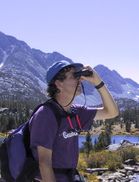 Imagine Earth as a button. I don’t mean you’re going to sew it onto your shirt. But imagine the planet Earth shrunk to the size of a button. (Of course Earth is not flat like a button but we’re giving our shrunken Earth the same diameter as a shirt button.) Go ahead and draw a circle around a shirt button. Call it “Earth.” Suppose you wanted to draw Jupiter, the largest planet, at the same scale as this micro-Earth. That means you’re going to shrink it to the same fraction of its original size as our button-Earth. What size would little Jupiter be? One way to find out would be to calculate how many times bigger the real Jupiter is than the real Earth. Earth’s diameter is about 8,000 miles (13,000 kilometers). Jupiter’s is about 88,000 miles (143,000 km). Divide the size of Jupiter by the size of Earth to see that Jupiter is about 11 times bigger. So, since Jupiter’s diameter is 11 times that of Earth’s, put 11 buttons in a line to show the diameter of Jupiter. Then draw the circle that represents Jupiter. If you don’t have 11 buttons, just look at the picture. Did you think the Earth was a big place? Look at it compared with Jupiter! But what about the sun? The sun’s diameter is about 865,000 miles (1,400,000 km). That means it’s almost 10 times bigger than Jupiter. Can you find a way to draw a circle 10 times the size of our Jupiter? We’ve drawn part of it for you, on the same scale as our button-sized Earth. On the picture, it’s labeled “our arc.” (An arc is part of a circle.) Looking at the arc, you can imagine the rest of the circle and compare the sun to Jupiter and Earth. A minute ago, you thought Jupiter was big. Now it looks shrimpy compared to the sun! But is the sun really gigantic? Do some research to find out the size of a red giant star like the strangely named Betelguese (pronounced “beetle-juice.”) Figure out what it looks like compared to our sun, which is a medium-sized star. You may be amazed at the difference. And you thought the sun was big! Is anything truly big? Is anything truly small? Or does that depend on what it’s being compared to? 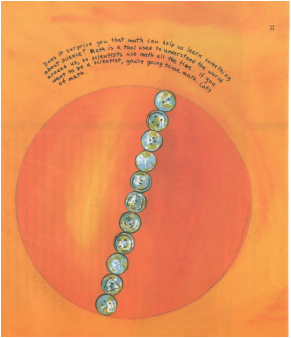 If the Earth were the size of a button, Jupiter’s diameter would equal eleven buttons because the diameter of Jupiter is eleven times that of Earth. If the Earth were the size of a button, Jupiter’s diameter would equal eleven buttons because the diameter of Jupiter is eleven times that of Earth. Both images are by Marissa Moss, the illustrator of David M Schwartz's book, G is for Googol.  G is for Googol: A Math Alphabet Book is a wonder-filled romp through the world of mathematics. For more information, click here. David Schwartz is a member of iNK's Authors on Call and is available for classroom programs through Field Trip Zoom, a terrific technology that requires only a computer, wifi, and a webcam. Click here to find out more. MLA Citation
Schwartz, David M. "If the Earth Were a Button." Nonfiction Minute, iNK Think Tank, 16 Jan. 2018, www.nonfictionminute.org/the-nonfiction-minute/ If-the-Earth-Were-a-Button. Are you tougher than a tardigrade? I don’t think so. These typically water-dwelling animals may be microscopic in size (barely half of a millimeter when fully grown!), but boy are they fierce. Sometimes called “water bears,” they’re anything but cuddly. Each of their eight legs is decked out with wicked claws. Some tardigrades have full body armor. Most have specialized "sucker" mouths to pierce the cells of plants and animals and suck out their nutrients, while others prefer to consume their tiny prey whole… and that prey might even be another tardigrade! Aside from ending up as someone else’s dinner, though, tardigrades are practically indestructible. They can survive in just about any conditions and take on just about anything life has in store for them. Starvation? No worries there: Tardigrades can go without food for at least 10 years. What about water, you say? No problem. They’ll just suspend their life activities and wait until the drought is over. They can survive at pressures more than six times that of the deepest ocean trenches. And, you’d die from radiation poisoning long before a tardigrade would even notice. Scientists have even tried shooting them into outer space… and the tardigrades survived. Because of their ability to live practically anywhere, these little guys are practically everywhere. Tardigrades can be found on top of Mount Everest and in boiling hot springs, in desert dunes and rainforest canopies, in freshwater lakes and salty oceans, on your roof, outside your front door… maybe even in your bed or on your dinner plate! There are billions and billions of tardigrades… and they’re always making more! Fortunately, there’s no need to worry—tardigrades are completely harmless to humans. In fact, tardigrades may actually end up being our best friends someday. Because they can do so many things that other Earthly animals can’t, scientists are studying tardigrades to try to find solutions to all kinds of problems. Want to dry something out to preserve it, then rehydrate it later? Study how tardigrades do it. Wish we could safely reanimate something that has been frozen? Learn from the tardigrades. Need to protect cells from being damaged by radiation? Figure out why tardigrade cells can withstand it. Who knows? Someday the tough tardigrades might teach us all kinds of handy tricks! Tardigrades are short and plump, with four pairs of legs, each with four to eight claws also known as "disks." Schokraie E, Warnken U, Hotz-Wagenblatt A, Grohme MA, Hengherr S, et al. (2012)/Wikimedia Commons An adult Milnesium tardigrade, an example of more than 1,000 species of the tiny animal. Bob Goldstein and Vicky Madden, UNC Chapel Hill/Wikimedia Common This video shows a tardigrade in real time at 100X magnification. Dmitry Brant via Wikimedia Commons 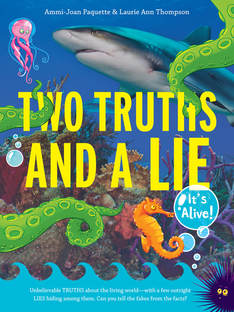 Laurie Ann Thompson and coauthor Ammi-Joan Paquette begin a fascinating new series with Two Truths and a Lie, a book that presents some of the most crazy-but-true stories about the living world. Some of the stories are too crazy to be true—and readers are asked to separate facts from fakes! "A brief but savvy guide to responsible research methods adds further luster to this crowd pleaser.” —ALA Booklist (starred review) MLA 8 Citation
Thompson, Laurie Ann. "Tardigrades Make the Grade." Nonfiction Minute, iNK Think Tank, 21 Mar. 2018, www.nonfictionminute.org/the-nonfiction-minute/ Tardigrades-Make-the-Grade. |
*NEWS
|
For Vicki Cobb's BLOG (nonfiction book reviews, info on education, more), click here: Vicki's Blog
The NCSS-CBC Notable Social Studies Committee is pleased to inform you
that 30 People Who Changed the World has been selected for Notable Social Studies Trade Books for Young People 2018, a cooperative project of the National Council for the Social Studies (NCSS) & the Children’s Book Council
Categories
All
Abolitionists
Adams Janus
Adaptation
Adaptations
Adkins Jan
Advertising
Aerodynamics
Africa
African American History
African Americans
Africa West
Agriculture
Aircraft
Air Pilots
Air Pressure
Air Travel
Albee Sarah
Alchemy
Alligators
Allusion
American History
American Icons
Amphibians
Amundsen Roald
Anatomy
Ancient
Ancient Cultures
Anderson Marian 1897-1993
Animal Behavior
Animal Experimentation
Animal Intelligence
Animals
Animation
Antarctica
Ants
Apache Indians
Apes
April Fool's Day
Architecture
Argument
Arithmetic
Art
Art Deco
Artists
Arts
Asia
Astronauts
Astronomy
Athletes
Atomic Theory
Audubon Societies
Authors
Autobiography
Automobiles
Aviation
Awards
Bacteria
Baseball
Battuta Ibn
Bears
Beatles
Beavers
Bees
Biodegradation
Biography
Biology
Biomes
Biomimicry
Biplanes
Birds
Black Death
Black History
Blindness
Blizzards
Bombs
Bonaparte Napoleon
Boone Daniel
Botany
Brazil
Bridges
Brill Marlene Targ
Brooklyn Bridge
Brown John
Buffaloes
Building Materials
Butterflies
Caesar
Caesar Julius
Caissons
Calculus
Calendars
Cannibal
Capitals
Caravaggio
Carbon Dioxide
Carnivores
Carson Mary Kay
Cartoons & Comics
Carving (Decorative Arts)
Cascade Range
Castaldo Nancy
Castles
Castrovilla Selene
Cathedrals
Cats
Caves
Celts
Cemeteries
Chemistry
Children's Authors
Child Welfare
China
Choctaw Indians
Christmas
Chronometers
Cicadas
Cinco De Mayo
Ciphers
Circle
Citizenship
Civil Rights
Civil Rights Movements
Civil War
Civil War - US
Climate
Climate Change
Clocks And Watches
Clouds
Cobb Vicki
COBOL (Computer Language)
Code And Cipher Stories
Collard III Sneed B.
Collectors And Collecting
Color
Commerce
Communication
Competition
Compilers
Composers
Computers
Congressional Gold Medal
Consitution
Contests
Contraltos
Coolidge Calvin
Cooling
Corms
Corn
Counterfeiters
Covid-19
Crocodiles
Cryptography
Culture
Darwin Charles
Declaration Of Independence
Decomposition
Decompression Sickness
Deep-sea Animals
Deer
De Medici Catherine
Design
Detectives
Dickens Charles
Disasters
Discrimination
Diseases
Disney Walt
DNA
Dogs
Dollar
Dolphins
Douglass Frederick 1818-1895
Droughts
Dr. Suess
Dunphy Madeleine
Ear
Earth
Earthquakes
Ecology
Economics
Ecosystem
Edison Thomas A
Education
Egypt
Eiffel-gustave-18321923
Eiffel-tower
Einstein-albert
Elephants
Elk
Emancipationproclamation
Endangered Species
Endangered-species
Energy
Engineering
England
Englishlanguage-arts
Entomology
Environmental-protection
Environmental-science
Equinox
Erie-canal
Etymology
Europe
European-history
Evolution
Experiments
Explorers
Explosions
Exports
Extinction
Extinction-biology
Eye
Fairs
Fawkes-guy
Federalgovernment
Film
Fires
Fishes
Flight
Floods
Flowers
Flute
Food
Food-chains
Foodpreservation
Foodsupply
Food-supply
Football
Forceandenergy
Force-and-energy
Forensicscienceandmedicine
Forensic Science And Medicine
Fossils
Foundlings
France
Francoprussian-war
Freedom
Freedomofspeech
French-revolution
Friction
Frogs
Frontier
Frontier-and-pioneer-life
Frozenfoods
Fugitiveslaves
Fultonrobert
Galapagos-islands
Galleys
Gametheory
Gaudi-antoni-18521926
Gender
Generals
Genes
Genetics
Geography
Geology
Geometry
Geysers
Ghosts
Giraffe
Glaciers
Glaucoma
Gliders-aeronautics
Global-warming
Gods-goddesses
Gold-mines-and-mining
Government
Grant-ulysses-s
Grasshoppers
Gravity
Great-britain
Great-depression
Greece
Greek-letters
Greenberg Jan
Hair
Halloween
Handel-george-frederic
Harness Cheryl
Harrison-john-16931776
Health-wellness
Hearing
Hearing-aids
Hearst-william-randolph
Henry-iv-king-of-england
Herbivores
Hip Hop
History
History-19th-century
History-france
History-world
Hitler-adolph
Hoaxes
Holidays
Hollihan Kerrie Logan
Homestead-law
Hopper-grace
Horses
Hot Air Balloons
Hot-air-balloons
Housing
Huguenots
Human Body
Hurricanes
Ice
Icebergs
Illustration
Imagery
Imhotep
Imperialism
Indian-code-talkers
Indonesia
Industrialization
Industrial-revolution
Inquisition
Insects
Insulation
Intelligence
Interstatecommerce
Interviewing
Inventions
Inventors
Irrational-numbers
Irrigation
Islands
Jacksonandrew
Jazz
Jeffersonthomas
Jefferson-thomas
Jemisonmae
Jenkins-steve
Jet-stream
Johnsonlyndonb
Jokes
Journalism
Keeling-charles-d
Kennedyjohnf
Kenya
Kidnapping
Kingmartinlutherjr19291968
Kingmartinlutherjr19291968d6528702d6
Kings-and-rulers
Kings Queens
Kings-queens
Koala
Labor
Labor Policy
Lafayette Marie Joseph Paul Yves Roch Gilbert Du Motier Marquis De 17571834
Landscapes
Languages-and-culture
Law-enforcement
Layfayette
Levers
Levinson Cynthia
Lewis And Clark Expedition (1804-1806)
Lewis Edmonia
Liberty
Lift (Aerodynamics)
Light
Lindbergh Charles
Liszt Franz
Literary Devices
Literature
Lizards
Longitude
Louis XIV King Of France
Lumber
Lunar Calendar
Lynching
Macaws
Madison-dolley
Madison-james
Madison-james
Mammals
Maneta-norman
Maneta-norman
Marathon-greece
Marine-biology
Marine-biology
Marines
Marsupials
Martial-arts
Marx-trish
Mass
Massachusetts-maritime-academy
Mass-media
Mastodons
Mathematics
May-day
Mcclafferty-carla-killough
Mcclafferty-carla-killough
Mckinley-william
Measurement
Mechanics
Media-literacy
Media-literacy
Medicine
Memoir
Memorial-day
Metaphor
Meteorology
Mexico
Mickey-mouse
Microscopy
Middle-west
Migration
Military
Miners
Mississippi
Molasses
Monarchy
Monsters
Montgomery
Montgomery-bus-boycott-19551956
Montgomery-heather-l
Monuments
Moon
Moran-thomas
Morsecode
Morsesamuel
Moss-marissa
Moss-marissa
Motion
Motion-pictures
Mummies
Munro-roxie
Munro-roxie
Musclestrength
Museums
Music
Muslims
Mythologygreek
Nanofibers
Nanotechnology
Nathan-amy
Nathan-amy
Nationalfootballleague
Nationalparksandreserves
Nativeamericans
Native-americans
Native-americans
Naturalhistory
Naturalists
Nature
Nauticalcharts
Nauticalinstruments
Navajoindians
Navigation
Navy
Ncaafootball
Nervoussystem
Newdeal19331939
Newman-aline
Newman-aline
Newton-isaac
New-york-city
Nobelprizewinners
Nomads
Nonfictionnarrative
Nutrition
Nylon
Nymphs-insects
Oaths Of Office
Occupations
Ocean
Ocean-liners
Olympics
Omnivores
Optics
Origami
Origin
Orphans
Ottomanempire
Painters
Painting
Paleontology
Pandemic
Paper-airplanes
Parksrosa19132005
Parrots
Passiveresistance
Patent Dorothy Hinshaw
Peerreview
Penguins
Persistence
Personalnarrative
Personification
Pets
Photography
Physics
Pi
Pigeons
Pilots
Pinkertonallan
Pirates
Plague
Plains
Plainsindians
Planets
Plantbreeding
Plants
Plastics
Poaching
Poetry
Poisons
Poland
Police
Political-parties
Pollen
Pollution
Polo-marco
Populism
Portraits
Predation
Predators
Presidentialmedaloffreedom
Presidents
Prey
Prey-predators
Prey-predators
Prime-meridian
Pringle Laurence
Prohibition
Proteins
Protestandsocialmovements
Protestants
Protestsongs
Punishment
Pyramids
Questioning
Radio
Railroad
Rainforests
Rappaport-doreen
Ratio
Reading
Realism
Recipes
Recycling
Refrigerators
Reich-susanna
Religion
Renaissance
Reproduction
Reptiles
Reservoirs
Rheumatoidarthritis
Rhythm-and-blues-music
Rice
Rivers
Roaringtwenties
Roosevelteleanor
Rooseveltfranklind
Roosevelt-franklin-d
Roosevelt-theodore
Running
Russia
Safety
Sanitation
Schwartz David M
Science
Scientificmethod
Scientists
Scottrobert
Sculpture
Sculpturegardens
Sea-level
Seals
Seals-animals
Secretariesofstate
Secretservice
Seeds
Segregation
Segregationineducation
Sensessensation
September11terroristattacks2001
Seuss
Sextant
Shackletonernest
Shawneeindians
Ships
Shortstories
Silkworms
Simple-machines
Singers
Siy Alexandra
Slavery
Smuggling
Snakes
Socialchange
Social-change
Socialjustice
Social-justice
Socialstudies
Social-studies
Social-studies
Sodhouses
Solarsystem
Sound
Southeast-asia
Soybean
Space Travelers
Spain
Speech
Speed
Spiders
Spies
Spiritualssongs
Sports
Sports-history
Sports-science
Spring
Squirrels
Statue-of-liberty
STEM
Storms
Strategy
Sugar
Sumatra
Summer
Superbowl
Surgery
Survival
Swanson-jennifer
Swinburne Stephen R.
Synthetic-drugs
Taiwan
Tardigrada
Tasmania
Tasmanian Devil
Tasmanian-devil
Technology
Tecumsehshawneechief
Telegraph-wireless
Temperature
Tennis
Terrorism
Thomas Peggy
Thompson Laurie Ann
Time
Titanic
Tombs
Tortoises
Towle Sarah
Transcontinental-flights
Transportation
Travel
Trees
Trung Sisters Rebellion
Tundra
Turnips
Turtles
Typhoons
Underground Railroad
Us-environmental-protection-agency
Us History
Us-history
Ushistoryrevolution
Us History Revolution
Us-history-war-of-1812
Us Presidents
Ussupremecourtlandmarkcases
Vacations
Vaccines
Vangoghvincent
Vegetables
Venom
Vietnam
Viruses
Visual-literacy
Volcanoes
Voting-rghts
War
Warne-kate
Warren Andrea
Washington-dc
Washington George
Water
Water-currents
Wax-figures
Weapons
Weather
Weatherford Carole Boston
Whiting Jim
Wildfires
Winds
Windsor-castle
Wolves
Woman In History
Women
Women Airforce Service Pilots
Women-airforce-service-pilots
Womeninhistory
Women In History
Women-in-science
Women's History
Womens-roles-through-history
Wonder
Woodson-carter-godwin-18751950
World-war-i
World War Ii
World-war-ii
Wright Brothers
Writing
Writing-skills
Wwi
Xrays
Yellowstone-national-park
Zaunders Bo
ArchivesMarch 2021
February 2021
January 2021
December 2020
November 2020
October 2020
September 2020
June 2020
May 2020
April 2020
March 2020
February 2020
January 2020
December 2019
October 2019
September 2019
August 2019
July 2019
May 2019
April 2019
March 2019
February 2019
January 2019
December 2018
November 2018
September 2018
June 2018
May 2018
April 2018
March 2018
February 2018
January 2018
December 2017
November 2017
October 2017
September 2017
March 2017
The NONFICTION MINUTE, Authors on Call, and. the iNK Books & Media Store are divisions of iNK THINK TANK INC.
a 501 (c) (3) nonprofit corporation. To return to the iNK Think Tank landing page click the icon or the link below. :
http://inkthinktank.org/
For more information or support, contact thoughts@inkthinktank.org
For Privacy Policy, go to
Privacy Policy
© COPYRIGHT the Nonfiction Minute 2020.
ALL RIGHTS RESERVED.
This site uses cookies to personalize your experience, analyze site usage, and offer tailored promotions. www.youronlinechoices.eu
Remind me later
Archives
March 2023
February 2023
January 2023
December 2022
November 2022
October 2022
September 2022
June 2022
May 2022
April 2022
March 2022
February 2022
January 2022
December 2021
November 2021
September 2021
April 2021
March 2021
February 2021
November 2020
October 2020
September 2020
June 2020
May 2020
April 2020
March 2020
February 2020
January 2020
October 2019
August 2019
July 2019
May 2019
April 2019
December 2018
September 2018
June 2018
May 2018
March 2018
February 2018
January 2018
December 2017
November 2017
October 2017
September 2017




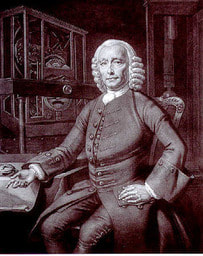
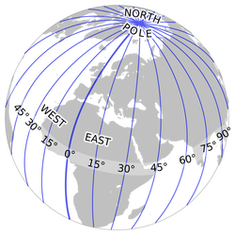
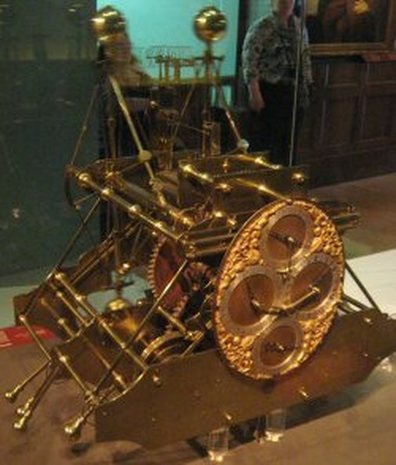




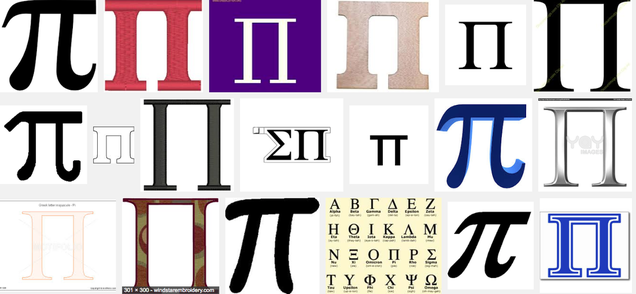






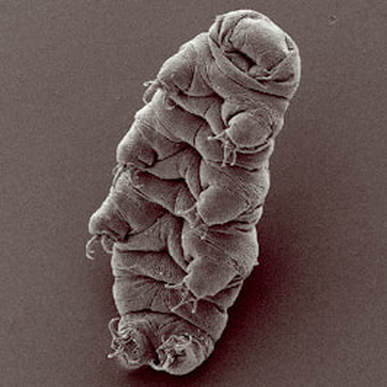


 RSS Feed
RSS Feed
